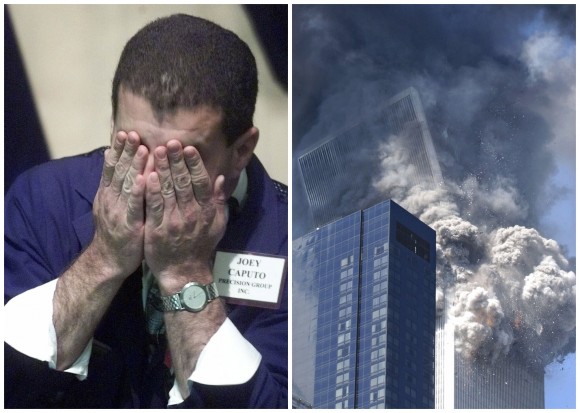A consumer advocacy group says the property/casualty insurance industry has been getting a sweet deal worth about $7 billion as a result of the federal government’s program to help pay terrorism insurance claims after private insurance is exhausted.
An industry economist calls the charge “bizarre” and the $7 billion figure “bogus.”
The original federal Terrorism Risk Insurance Act (TRIA) was enacted after the Sept. 11, 2001 attacks to allow the federal government and the insurance industry to share losses in the event of a major terrorist attack. The current version of TRIA, officially the Terrorism Risk Insurance Program Reauthorization Act (TRIPRA), expires at the end of 2014 and Congress has already begun debating whether to keep it or kill it.
The insurance industry and construction, banking and real estate interests support renewal of TRIA but some in Congress, including fiscal conservatives, think the program is unnecessary and hinders development of private financing solutions. Even the Treasury Department has questioned the need to renew TRIA.
The Consumer Federation of America (CFA) is also urging Congress not to renew it because it says TRIA amounts to a subsidy that is helping turn P/C insurers into “nervous nellies” that are afraid to underwrite difficult risks like terrorist attacks. CFA also opposed renewal back in 2004.
The CFA says its $7 billion figure is the minimum premium private insurers would have paid from 2002 to 2012 for the reinsurance like that which has been provided by the federal government for free. CFA’s Insurance Director J. Robert Hunter said he calculated the $7 billion figure by adding a few years to a Congressional Budget Office estimate of $3.1 billion as the typical cost of modeled terrorism losses for 2008 through 2012 and another $3.3 billion expense projected through 2017.
A leading economist for the property/casualty industry calls the CFA’s $7 billion figure “bogus” and its position against TRIA “anti-consumer.”
Dr. Robert Hartwig, president of the industry’s Insurance Information Institute (III), says the TRIA program has cost taxpayers almost nothing. Also it is strange hearing CFA argue against renewing TRIA because that would hurt consumers, according to Hartwig.

III
“The insistence that TRIA not be authorized is fundamentally bizarre coming from the CFA, which says it is a consumer organization,” Hartwig says.
In Hartwig’s view, opposing TRIA is an anti-consumer stance because without the federal insurance backstop private terrorism coverage will become less available and less affordable, which will hamper the ability of some businesses to operate. Also, failure to renew TRIA could hurt construction projects and commercial loan activity, both of which support jobs.
“Anything that could adversely affect what remains a very fragile employment picture in the U.S. is also anti-consumer,” Hartwig says.
The CBO in a 2006 report found that after TRIA’s enactment, there was some recovery in commercial construction but that the law had “little measurable effect nationally on office construction, employment in the construction industry, or the volume of commercial construction loans made by large commercial banks.”
Hartwig also says that if the act is not extended, some insurers will decide not to write it at all or they will write less and charge more for what they do write.
But Hunter thinks it’s better to deal with the possibility of market restrictions and coverage being unavailable if and when it happens.
“If there are instances where it has been difficult to obtain insurance coverage, the Federal Insurance Office should work with appropriate state insurance commissions to examine and efficiently mitigate these deficiencies,” he said in a statement.
III’s Hartwig dismisses the CFA’s $7 billion figure as meaningless, saying nobody knows where and when the next terrorist attack may occur and how much damage it will do.
“It’s a bogus number because if it were not for the terrorism risk insurance act, insurers wouldn’t be involved with this to begin with. It’s hard to say insurers are getting a subsidy for a business that they are only in because there is a federal backstop…It’s bizarre to argue that,” Hartwig said.
The III economist thinks CFA is being presumptuous.
“The CFA apparently knows more than the insurance industry, the federal government, the military, the CIA [Central Intelligence Agency], the NSA [National Security Agency] combined because apparently they know what the expected cost and frequency are of future terrorist attacks,” he told Insurance Journal.
According to Hartwig, terrorism risk today is “very much the face of warfare” and “war has never been insurable.”
But the CFA’s Hunter, who is a former Texas insurance commissioner and federal insurance commissioner, believes the $7 billion is real and it is one of the reasons the industry wants Congress to renew the program.
“We understand the desire of the insurers to keep a free reinsurance program and thus further expand their profits, but at a time of record-breaking federal budget deficits, we question the wisdom of providing multi-billion dollar subsides to an industry that can easily afford to insure many terrorist events even larger than 9/11,” Hunter said in a statement.
Hunter says rather than taking on the terrorism risk themselves, private insurers have “become ‘nervous nellies’ on the issue, preferring extreme caution to their normal risk-taking role to the detriment of those needing permanent insurance protections in place.” He said TRIA was never intended to be permanent.
Hunter also says the P/C industry, which reported record surplus of close to $600 billion at the close of 2012, does not need the government subsidy and could handily absorb any losses now covered by the federal program should a major terrorist attack occur. TRIA only covers losses after the first $100 billion.
“The industry can easily afford the losses of up to $100 billion that the current act would cover,” said Hunter said, adding that since TRIA does not cover nuclear, biological or chemical terrorism, losses would not reach anywhere near the $600 billion and are even unlikely to reach $100 billion.
According to Hartwig, the American Academy of Actuaries years ago estimated that “hundreds of billions of dollars in insured claim payouts could be generated by a single terrorist attack in one city, so there is a role for the federal government to play when it comes to sharing in the very substantial risks the nation faces.”
The number of companies purchasing property terrorism coverage from private insurers has remained fairly constant, in the low 60 percent range, since 2009 as insurers underwrite the risk backed by TRIPRA, according to a report by broker Marsh. The Marsh report found that premium rates also have remained generally steady for terrorism coverage, the report found. Companies with total insured value (TIV) of less than $100 million paid a median of $49 per million of TIV in 2012, the same as in 2011, while the median rate paid by companies with more than $1 billion in TIV was $19 per $1 million TIV in 2012, down from $21 in 2011.
“Clearly the demand for terrorism risk insurance remains strong and the existence of the federal program plays a major part in the availability and affordability of the coverage,” said Dan Glaser, president and CEO of Marsh & McLennan Companies said at a recent meeting in Washington of supporters of TRIA.
Topics Catastrophe Carriers Property Casualty Market Construction
Was this article valuable?
Here are more articles you may enjoy.



 MAPFRE Accuses AAA of Violating Long-Time Exclusive Marketing Agreement
MAPFRE Accuses AAA of Violating Long-Time Exclusive Marketing Agreement  Adjusters Launch ‘CarFax for Insurance Claims’ to Vet Carriers’ Damage Estimates
Adjusters Launch ‘CarFax for Insurance Claims’ to Vet Carriers’ Damage Estimates  Expense Ratio Analysis: AI, Remote Work Drive Better P/C Insurer Results
Expense Ratio Analysis: AI, Remote Work Drive Better P/C Insurer Results  Good Times for US P/C Insurers May Not Last; Auto Challenges Ahead
Good Times for US P/C Insurers May Not Last; Auto Challenges Ahead 

